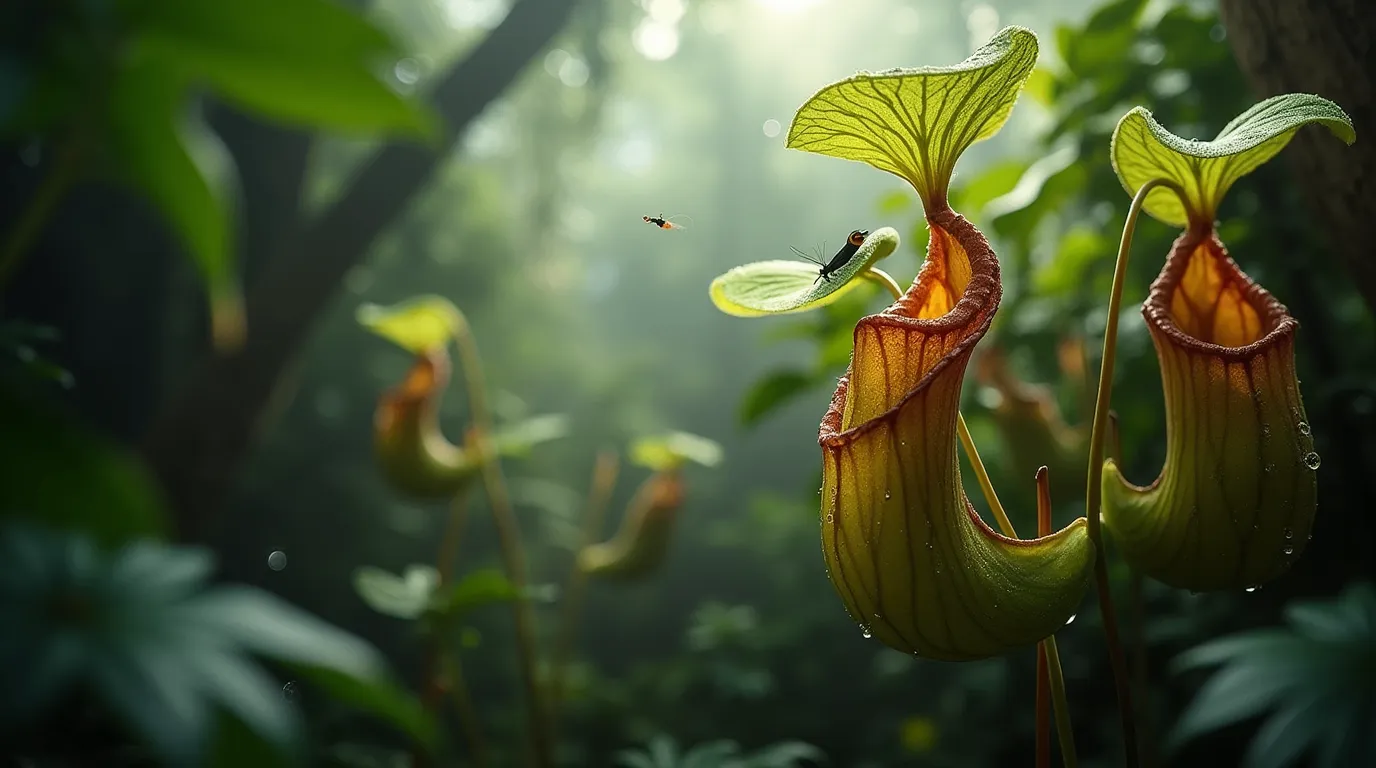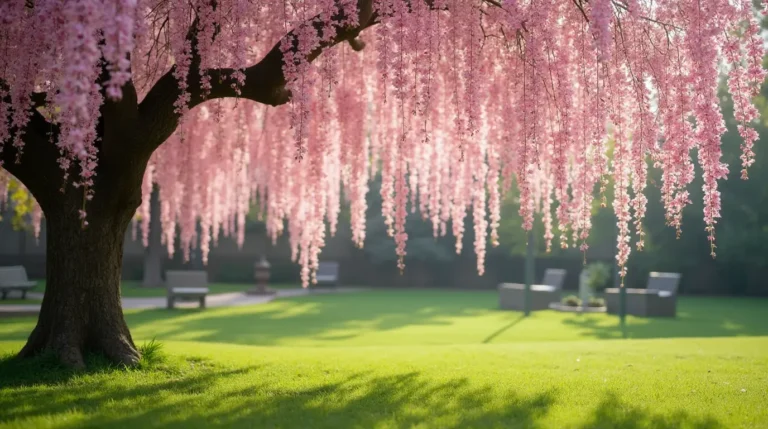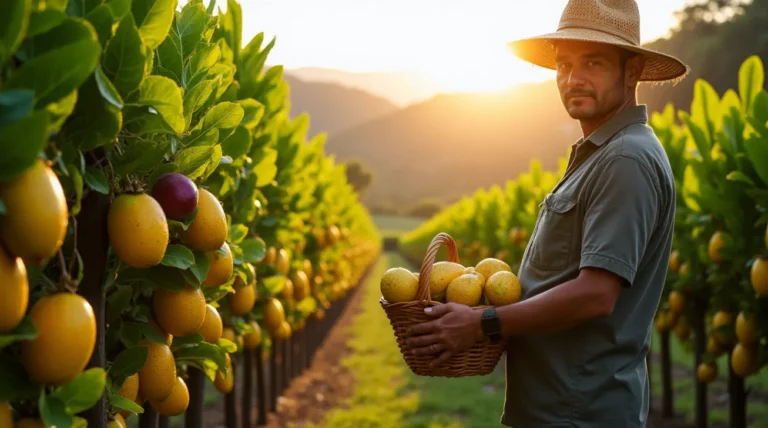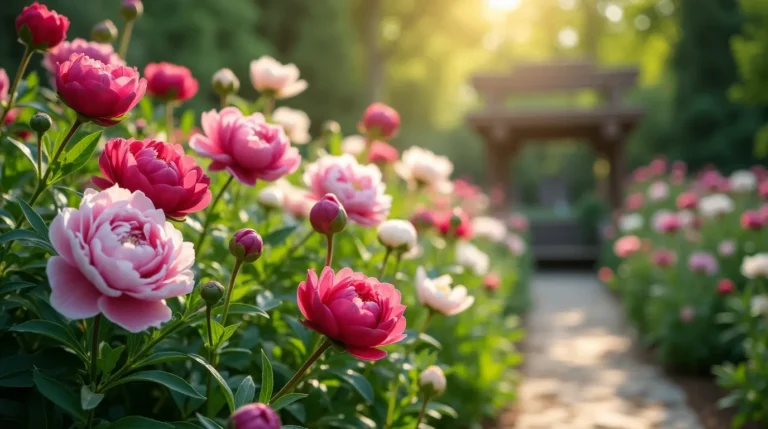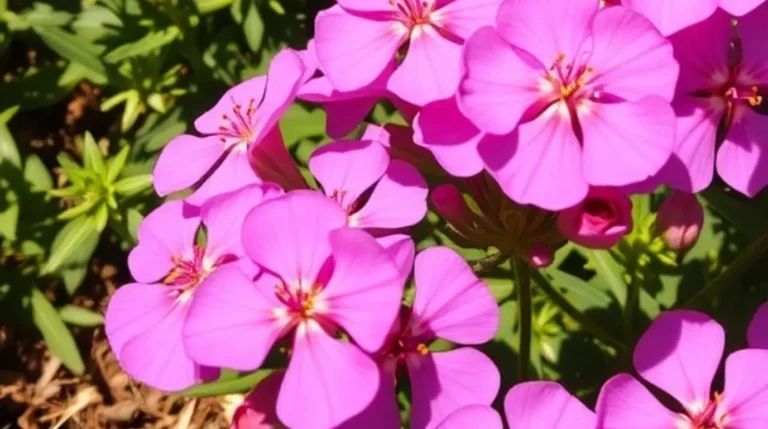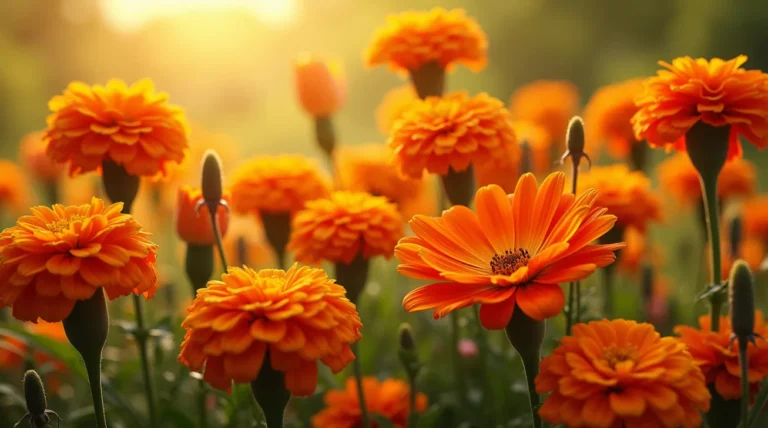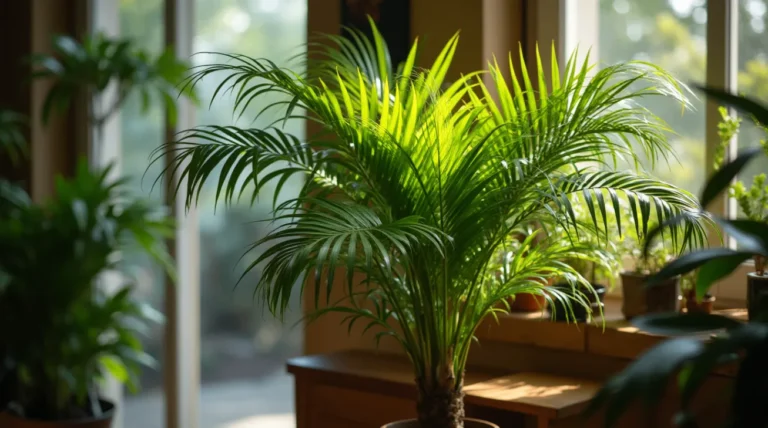How to Grow Nepenthes 101: A Complete Guide for Exotic Plant Enthusiasts
Table of Contents
The captivating world of carnivorous plants offers an intriguing array of species, with Nepenthes, or tropical pitcher plants, standing out as particularly fascinating. For exotic plant enthusiasts and gardeners alike, understanding how to grow Nepenthes can open the door to a rewarding horticultural experience. These remarkable plants, known for their unique pitcher-shaped leaves that trap and digest insects, require specific conditions and care to thrive. This comprehensive guide will provide you with essential Nepenthes care tips, from choosing the right environment to mastering watering techniques, ensuring your venture into cultivating these extraordinary plants is both successful and enjoyable. Dive in to discover the secrets of nurturing these tropical wonders and enhancing your collection with one of nature’s most extraordinary creations.
Understanding Nepenthes Basics
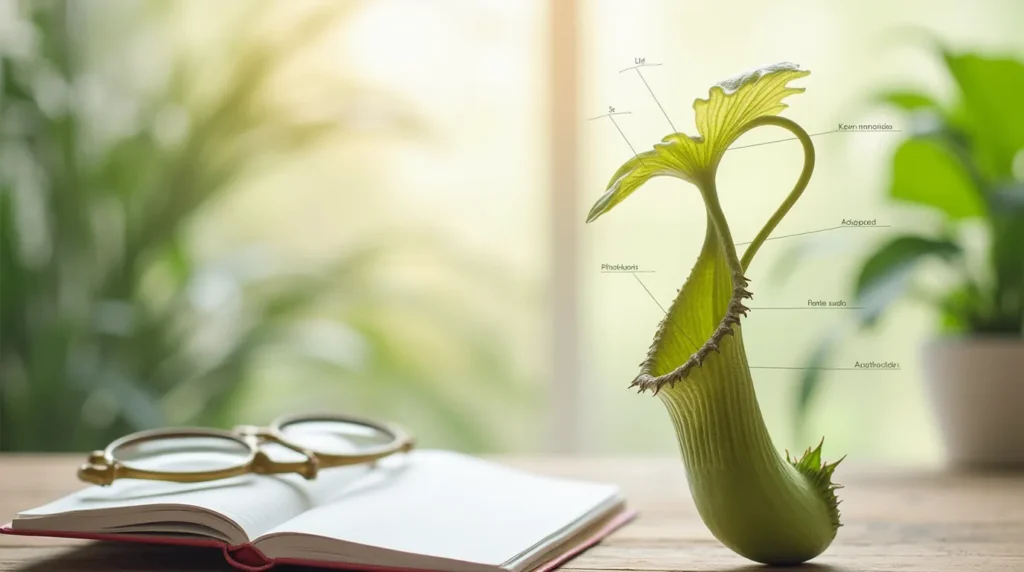
Introduction to Tropical Pitcher Plants
Tropical pitcher plants, or Nepenthes, are a fascinating group of carnivorous plants native to regions like Southeast Asia, Madagascar, and Australia. These plants are uniquely adapted to nutrient-poor environments by developing specialized leaves that form pitcher-shaped traps. The pitchers contain a digestive fluid that breaks down prey, typically insects, providing essential nutrients. Understanding these plants begins with recognizing their dependency on high humidity, warm temperatures, and bright, indirect sunlight—conditions that mirror their natural tropical habitats. Growing Nepenthes requires replicating this environment as closely as possible. Their unique adaptations not only make them intriguing but also demand specific care practices. These plants are not just decorative; they represent a remarkable evolutionary strategy. As you embark on your journey of growing Nepenthes, appreciating their natural history and ecological roles will enhance your cultivation efforts and deepen your appreciation for these extraordinary members of the plant kingdom.
Key Characteristics of Carnivorous Plants
Carnivorous plants, including the mesmerizing Nepenthes, possess distinct features that set them apart from typical flora. These plants have evolved to capture and digest prey, primarily insects, to supplement their nutrient intake from otherwise poor soil conditions. Key characteristics include specialized leaf structures, such as the iconic pitchers of Nepenthes, that serve as traps. These traps often contain nectar or visual lures to attract prey. Once an insect falls into the trap, it is unable to escape due to a combination of slippery surfaces and downward-pointing hairs. Digestive enzymes within the trap then break down the prey, allowing the plant to absorb essential nutrients like nitrogen and phosphorus. This unique method of nutrient acquisition allows carnivorous plants to thrive in challenging environments where other plants might struggle. Understanding these characteristics is crucial for providing proper Nepenthes care, ensuring that these captivating plants flourish in your collection.
Importance of Proper Nepenthes Care
Proper Nepenthes care is essential for ensuring these tropical pitcher plants thrive in non-native environments. Due to their specific habitat needs, replicating their natural conditions is crucial. This involves maintaining high humidity, providing adequate warmth, and ensuring access to bright yet indirect light. Without these conditions, Nepenthes may struggle to produce their distinctive traps or suffer from health issues. Furthermore, understanding their unique nutritional needs, such as occasional feeding with insects or appropriate plant food, can help them flourish. Inadequate care can lead to poor growth, yellowing leaves, or even the death of the plant. Therefore, investing time and effort into understanding and maintaining optimal care conditions will reward you with a healthy, vibrant plant. By prioritizing proper Nepenthes care, enthusiasts can enjoy not only the aesthetic beauty but also the ecological wonder of these carnivorous plants, adding a unique conversation piece to any plant collection.
Optimal Growing Conditions
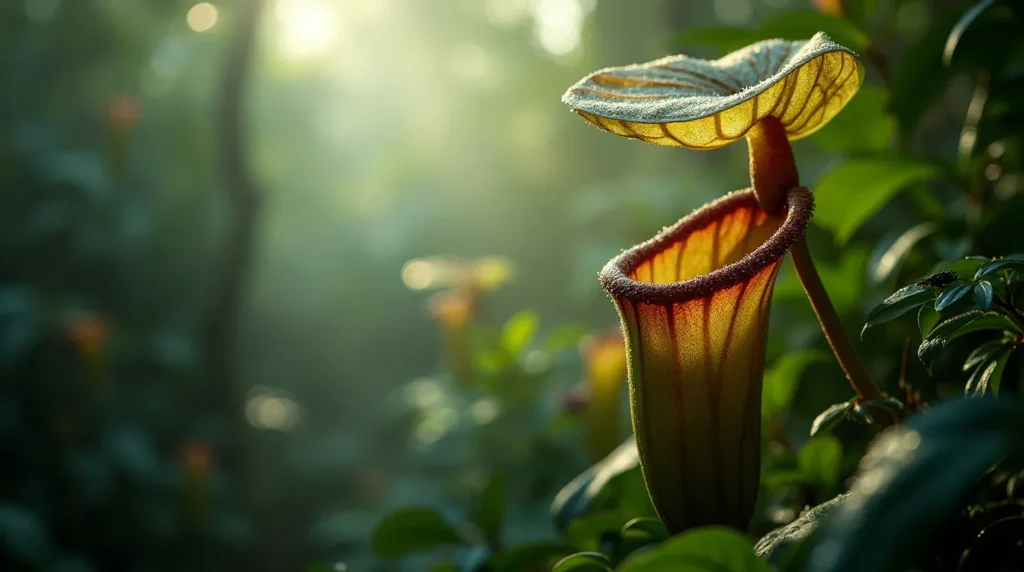
Ideal Climate and Environment
Creating the ideal climate and environment is crucial for successfully growing Nepenthes. These tropical pitcher plants thrive in warm, humid conditions, typically found in their native habitats of Southeast Asia and similar regions. To mimic these conditions, aim for temperatures between 70°F to 85°F during the day, with slight cooling at night. Humidity levels should be consistently high, at least 60%, which can be achieved with a humidifier or by placing the plant in a terrarium. Bright, indirect sunlight is essential for their growth; direct sunlight can scorch the leaves, while insufficient light may stunt their development. A well-ventilated area is also important to prevent fungal diseases. For those in cooler climates, consider growing Nepenthes indoors where conditions can be controlled more easily. By replicating their natural environment as closely as possible, you can provide optimal conditions for your Nepenthes, encouraging robust growth and the development of their distinctive, insect-trapping pitchers.
Soil and Water Requirements
The soil and water requirements for Nepenthes are distinct from many other plants, reflecting their adaptation to nutrient-poor environments. These tropical pitcher plants prefer a well-draining, acidic soil mix. A common blend includes sphagnum moss, perlite, and orchid bark, which helps replicate their natural growing conditions. Avoid standard potting soil, as it retains too much moisture and may contain fertilizers harmful to Nepenthes. Watering is another critical aspect of Nepenthes care. They require pure water, such as rainwater, distilled water, or reverse osmosis water, to prevent mineral buildup that can damage the plant. Keep the soil consistently moist, but avoid overwatering, as too much moisture can cause root rot. It’s also beneficial to mist the plants regularly to maintain humidity. By providing the appropriate soil and water conditions, you can support healthy growth and ensure your Nepenthes continues to produce its captivating, insect-catching pitchers.
Light and Humidity Needs
Light and humidity are vital factors in providing optimal growing conditions for Nepenthes. These tropical pitcher plants thrive in bright, indirect light. Direct sunlight can be too intense and may cause leaf burn, while low light levels can hinder growth and pitcher development. Ideally, place them near a south or east-facing window with filtered light or use grow lights to ensure they receive sufficient illumination. Alongside light, maintaining high humidity is crucial. Nepenthes prefer humidity levels of 60% or higher, mimicking their native tropical environments. To achieve this, consider using a humidifier or placing the plant on a humidity tray. Regular misting can help sustain humidity levels around the plant. If growing indoors, an enclosed terrarium can provide the necessary humidity while ensuring adequate ventilation. By carefully managing light and humidity needs, you can create a supportive environment that promotes healthy, vigorous growth for your Nepenthes.
Practical Plant Care Tips
Repotting and Pruning Techniques
Repotting and pruning are essential techniques in maintaining the health and appearance of your Nepenthes. These tropical pitcher plants typically require repotting every couple of years, or when they outgrow their current container. When repotting, choose a slightly larger pot with adequate drainage and refresh the soil mix using sphagnum moss, perlite, and orchid bark. This encourages robust root development and improves the plant’s overall vigor. Pruning is equally important for Nepenthes care, as it helps maintain the plant’s shape and encourages new growth. Trim away dead or dying leaves and stems, focusing on parts that are brown or withered. This enhances the plant’s appearance while also reducing the risk of disease spread. When pruning, use sharp, clean scissors to avoid damaging healthy tissue. By integrating regular repotting and pruning into your plant care routine, you can support a thriving, visually appealing Nepenthes that continues to showcase its unique, insect-trapping pitchers.
Common Pests and How to Grow Nepenthes
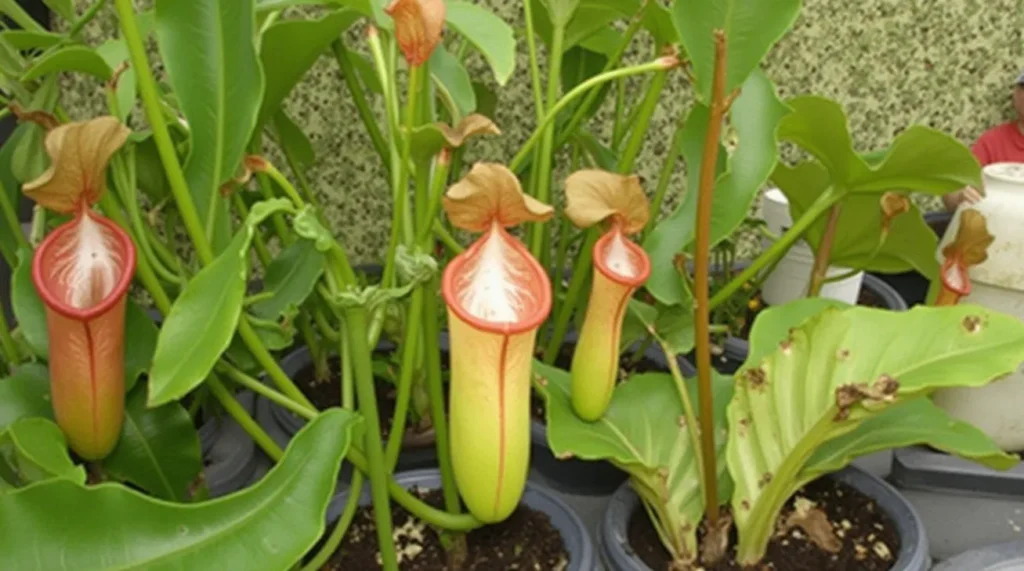
While Nepenthes are generally resilient, they can occasionally fall victim to common pests. Aphids, mealybugs, and spider mites are among the most frequent culprits. These pests can harm the plant by sucking sap, which weakens the leaves and impedes growth. To prevent infestations, regularly inspect your Nepenthes for any signs of pests, such as discolored leaves or webbing. If pests are found, it’s important to take immediate action. For mild infestations, manually remove pests with a damp cloth or cotton swab. For more severe cases, use insecticidal soap or neem oil, ensuring you thoroughly cover the affected areas. Maintaining optimal growing conditions—such as proper humidity and ventilation—can also deter pests. Understanding these challenges and how to address them is integral to successful Nepenthes care. By staying vigilant and applying these plant care tips, you can ensure your tropical pitcher plant remains healthy and continues to grow robustly.
Troubleshooting Growth Issues
When growing Nepenthes, encountering growth issues is not uncommon, but understanding how to troubleshoot these problems is key to successful plant care. Yellowing leaves can indicate overwatering or poor drainage, which may lead to root rot. Ensure the plant’s potting mix is well-draining and reduce watering if necessary. The lack of pitcher development could be a sign of insufficient light or humidity. Adjust the plant’s environment by providing brighter indirect light and increasing humidity with a humidifier or misting. If the plant appears leggy or weak, it might be receiving too little light. Reposition the plant to a brighter location or use grow lights to supplement natural light. Brown leaf tips often result from low humidity or excess minerals in the water. Use distilled or rainwater and maintain high humidity levels. By identifying and addressing these common issues promptly, you can enhance your Nepenthes care routine and ensure healthy, vigorous growth.

